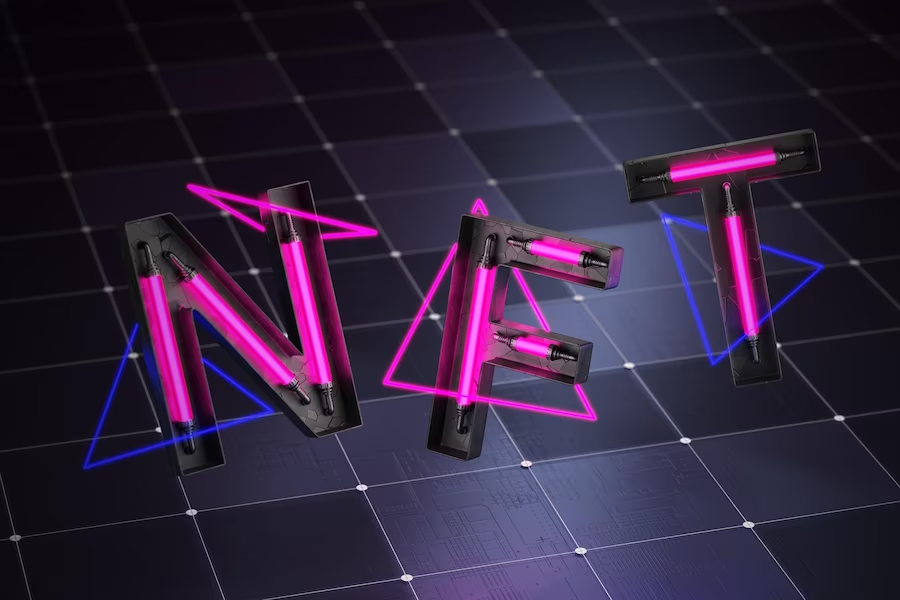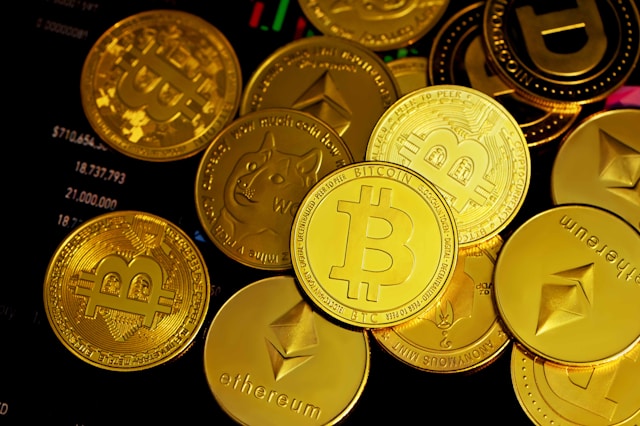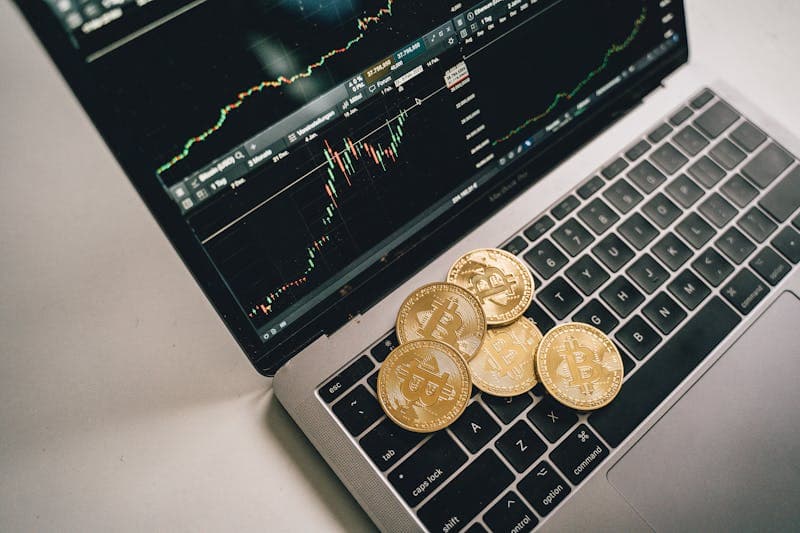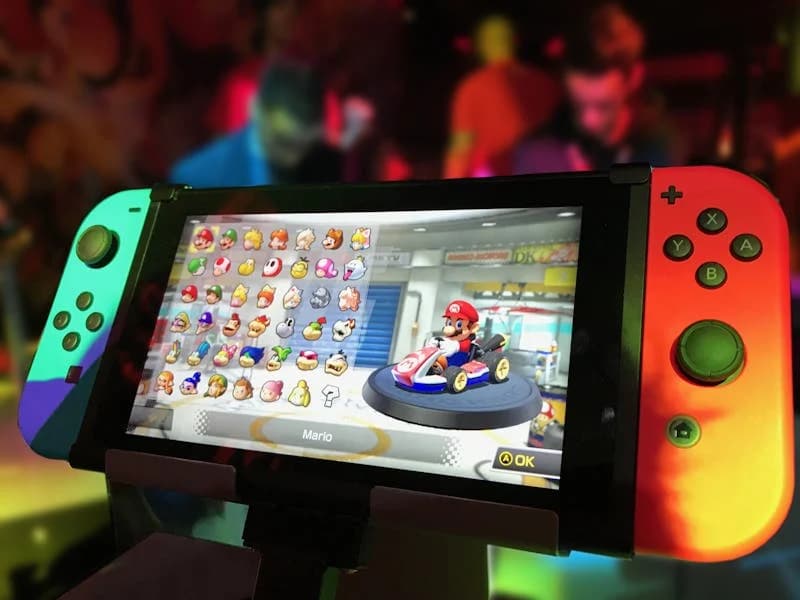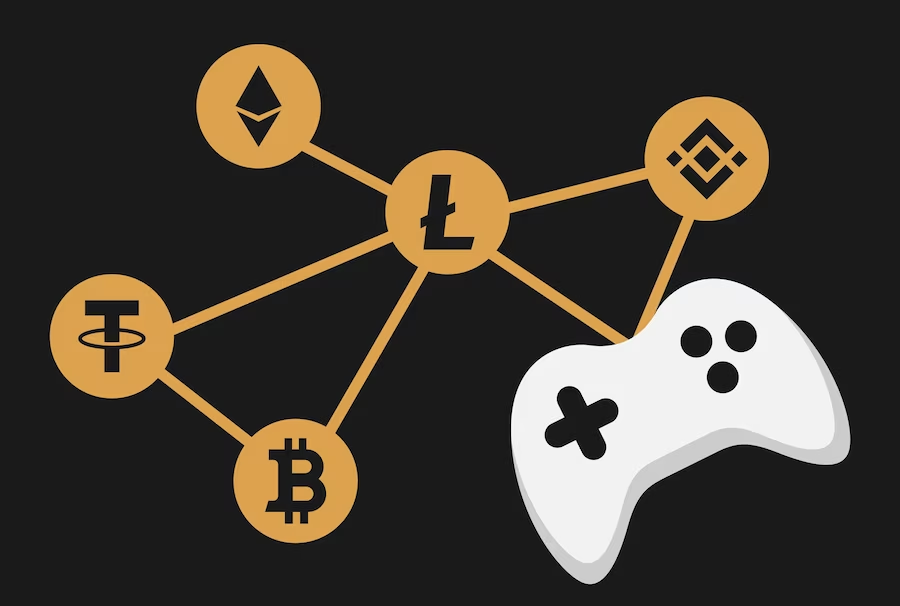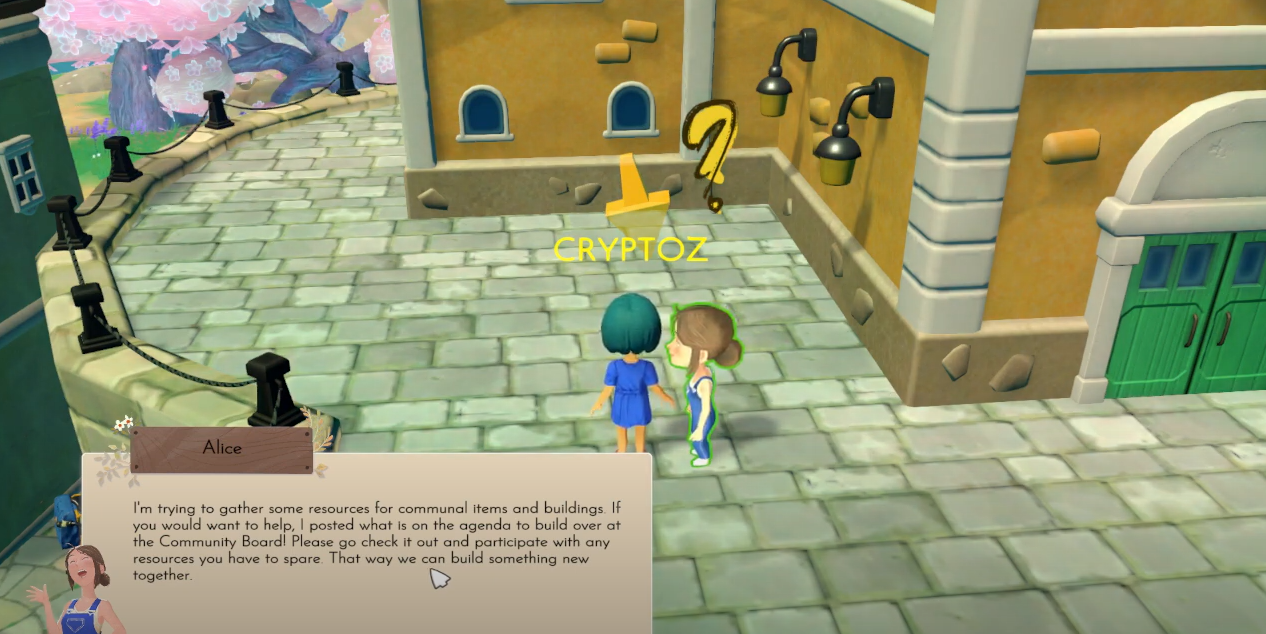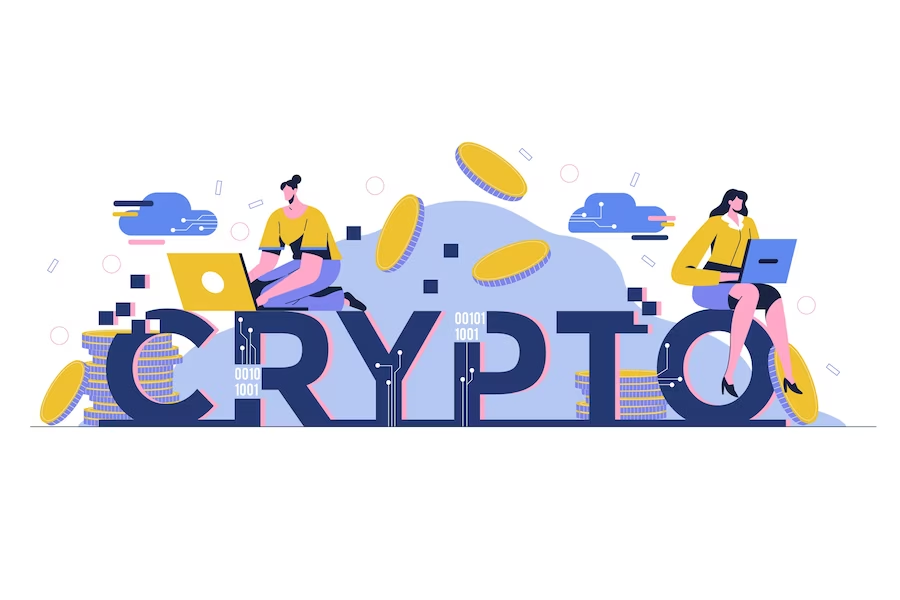The emergence of blockchain technology has brought about a transformative shift in the gaming industry. With the integration of non-fungible tokens (NFTs), a whole new realm of possibilities has opened up for developers and players alike, giving rise to a completely novel sector known as NFT games. Within the confines of this article, we shall embark on a profound exploration of the intricate world of NFT games, unraveling their intrinsic significance, myriad advantages, notable criticisms, and captivating prospects for the future.
Understanding NFTs and Their Application in Games
The gaming industry has undergone a revolutionary transformation with the introduction of blockchain technology and its utilization in the creation of non-fungible tokens (NFTs). NFTs, distinct from cryptocurrencies like Bitcoin and Ethereum, are digital assets with unparalleled uniqueness and immutability.
In the realm of gaming, NFTs serve multiple purposes. They establish provable scarcity and digital ownership, granting players exclusive rights to their virtual possessions. Additionally, NFTs enable asset interoperability across various platforms, facilitating seamless transfer and utilization of in-game items. Players now have the ability to possess, acquire, trade, sell, and even earn NFTs while immersing themselves in the gaming experience.
Table 1: Difference between Fungible Tokens and Non-Fungible Tokens
| Fungible Tokens | Non-Fungible Tokens | |
|---|---|---|
| Interchangeability | All tokens are identical and can be swapped for each other | Each token is unique, cannot be replicated |
| Use Cases | Currencies like Bitcoin, Ethereum | Digital Art, Gaming Assets, Collectibles |
The Mechanics of NFT Games
NFTs in gaming are generally used to represent in-game assets. This could include anything from virtual plots of land, equipment, characters, and even actions taken within the game, such as winning a battle or completing a quest.
These assets can be bought, sold, and traded on various online platforms, giving them a real-world value. This also opens up the possibility for players to earn a living from playing these games, a concept known as “Play to Earn”.
Some popular NFT games include:
CryptoKitties
CryptoKitties is an innovative and popular blockchain-based virtual game that enables players to adopt, raise, and trade unique virtual cats. Launched in 2017, CryptoKitties quickly gained attention as one of the earliest non-fungible token (NFT) projects, showcasing the potential of blockchain technology beyond cryptocurrencies.
The game revolves around the concept of collecting and breeding digital cats, each with its own distinctive attributes and traits. These virtual felines are stored on the Ethereum blockchain, ensuring transparency and immutability of ownership. Once a player owns a CryptoKitty, they have full ownership rights and can make decisions regarding its care, breeding, or sale.
Here is some key information about CryptoKitties:
- Ownership: Each CryptoKitty is unique and 100% owned by the player who possesses it. The ownership is verifiable on the blockchain, guaranteeing authenticity and preventing duplication or tampering;
- Rarity and Traits: CryptoKitties come with various traits that make them distinct from one another. These traits can include physical characteristics, backgrounds, and special features. Some traits may be more rare and desirable than others, leading to variations in their market value;
- Breeding: Players have the ability to breed their CryptoKitties to create new and unique offspring. By selecting two compatible cats, players can generate a new kitten with a blend of their parent’s traits. The rarity of traits plays a role in determining the potential value of the offspring;
- Trading: CryptoKitties can be bought, sold, and traded on various marketplaces. Players can list their cats for sale or browse existing listings to find cats they wish to acquire. The prices of CryptoKitties can vary greatly based on their rarity, desirability, and market demand.
To better understand the structure of the information, here’s a table highlighting the main features of CryptoKitties:
| Feature | Description |
|---|---|
| Game | CryptoKitties |
| Concept | Blockchain-based virtual game |
| Ownership | Cats are 100% owned by the player |
| Traits | Each cat has unique attributes and traits |
| Breeding | Players can breed their cats to create new offspring |
| Trading | Cats can be bought, sold, and traded on various marketplaces |
| Value | Rarity and desirability of traits affect the value of CryptoKitties |
| Blockchain | Cats are stored on the Ethereum blockchain, ensuring transparency and immutability of ownership |
Axie Infinity
Axie Infinity is a revolutionary digital pet universe that offers players an immersive experience in battling, raising, and trading fantasy creatures known as Axies. With its unique combination of gameplay elements and blockchain technology, Axie Infinity has gained significant popularity and has become a prominent player in the world of non-fungible tokens (NFTs) and decentralized finance (DeFi).
Key Features of Axie Infinity:
| Feature | Description |
|---|---|
| Axies | Axies are adorable and collectible creatures that players can own, raise, and battle. Each Axie has its own distinct characteristics, abilities, and stats, making them valuable and sought after in the Axie Infinity ecosystem. |
| Battles | Players can engage in turn-based battles using their Axies against other players or computer-controlled opponents. Strategy and team composition are crucial for victory, as different Axies possess unique skills and attributes. |
| Breeding and Raising | Axie Infinity allows players to breed their Axies, creating new and potentially more powerful generations. Through careful breeding and nurturing, players can enhance the traits and abilities of their Axies, creating a thriving marketplace for highly desirable offspring. |
| Marketplace | The Axie Infinity marketplace serves as a hub for buying, selling, and trading Axies. Here, players can showcase their rare and powerful Axies, negotiate prices, and engage in transactions using cryptocurrencies. |
| Play-to-Earn | One of the most notable aspects of Axie Infinity is its play-to-earn model, where players can generate income by participating in the game. By winning battles, breeding valuable Axies, and trading them on the marketplace, players can earn cryptocurrencies, such as Smooth Love Potion (SLP), which can be exchanged for real-world value. |
Decentraland
Decentraland is a groundbreaking decentralized virtual reality (VR) platform that operates on the Ethereum blockchain, providing users with the ability to create, explore, and monetize content and applications. Through its immersive VR environment, Decentraland offers a unique experience where users can interact with each other, participate in activities, and shape the virtual world according to their preferences.
Key Features of Decentraland:
| Feature | Description |
|---|---|
| Virtual Land Ownership | Decentraland is built on the concept of virtual land ownership. Users can purchase virtual land parcels, represented as non-fungible tokens (NFTs) called LAND, on the Ethereum blockchain. Each LAND parcel is unique and can be developed, customized, and monetized by its owner. |
| User-Created Content | The platform empowers users to create and publish their own content and experiences within their virtual land parcels. This can include anything from artwork, 3D models, games, virtual shops, and interactive experiences. The decentralized nature of Decentraland ensures that users have complete control over their creations. |
| Social Interactions | Decentraland fosters social interactions by enabling users to explore the virtual world, visit other users’ parcels, and engage in real-time communication through voice and text chat. Users can host events, attend virtual conferences, and participate in collaborative activities, creating a vibrant and interactive community. |
| Economy and Monetization | Decentraland features a decentralized economy where users can monetize their virtual land and creations. Users can sell or rent out their parcels, charge fees for accessing their experiences, and trade virtual assets on the marketplace. The platform’s native cryptocurrency, MANA, is used for transactions within the ecosystem, providing users with economic incentives and opportunities. |
The Advantages and Potential of NFT Games
The unique nature of NFTs and their application in games presents numerous advantages and possibilities:
- Digital Ownership: NFTs allow for actual ownership of in-game assets. This is a major shift from traditional games where all in-game items are essentially leased to players and remain the property of the game developer or publisher;
- Interoperability: With NFTs, in-game assets can be used across multiple games or platforms, leading to an interconnected metaverse of games;
- Monetization: NFTs can be bought, sold, and traded, allowing players to earn real-world money. This has led to the rise of the “Play to Earn” model;
- Immutability: Since NFTs are stored on a blockchain, they cannot be altered or deleted, providing assurance of their authenticity and ownership.
The Criticisms and Challenges of NFT Games
While NFT games hold significant potential, they have not been without their criticisms and challenges:
- Environmental Impact: Like other blockchain technologies, the creation and transaction of NFTs consume significant energy, leading to environmental concerns;
- Accessibility: The entry cost for some NFT games can be high, making them inaccessible to many players;
- Market Volatility: The value of NFTs can be highly volatile, leading to potential financial risks for players;
- Scams and Fraud: The NFT space has seen a number of scams and fraudulent activities, leading to a lack of trust among potential players and investors.
The Future of NFT Games
The future of NFT games looks promising, with new concepts such as “Play to Earn” model, decentralized gaming, and the metaverse. However, the sector is still in its early stages and will likely face numerous changes and challenges as it matures.
Forecasting the Future of NFT Games
| Predictions | Description |
|---|---|
| Rise of the “Play to Earn” Model | More games will likely adopt the “Play to Earn” model as it provides economic incentives for players. |
| Increased Interoperability | The cross-platform usage of NFTs will likely increase, leading to a more interconnected metaverse of games. |
| Regulation | Given the issues around scams, fraud, and market volatility, the sector will likely see increased regulation. |
| Technological Advancements | Technological improvements could mitigate some of the current challenges of NFT games, such as their environmental impact. |
Conclusion
The realm of NFT games is undeniably a rapidly growing sector brimming with boundless potential. As this innovative landscape unfolds, it becomes imperative for aspiring players and investors to grasp the inner workings of these games, as well as comprehend the potential advantages they offer and the inherent risks they entail. By delving into the intricacies of NFT games, one can truly appreciate the unique opportunities they present to both gaming enthusiasts and developers alike.
FAQ
An NFT game is a game that integrates non-fungible tokens (NFTs) as part of its in-game economy. NFTs represent unique items or assets in the game that players can own, buy, sell, trade, and even earn while playing.
NFTs represent in-game assets and can be anything from characters, equipment, virtual real estate, and more. These assets are stored on a blockchain, ensuring their uniqueness, ownership, and immutability.
Yes, through the “Play to Earn” model, players can earn NFTs by playing games and then sell these on various online platforms.
While NFT games hold great potential, they also come with risks, including market volatility, scams, and fraud. It’s important to do thorough research before investing in any NFT games.
To start playing NFT games, you will typically need a digital wallet, some cryptocurrency to use in transactions, and an account with the game or platform you wish to play on.
